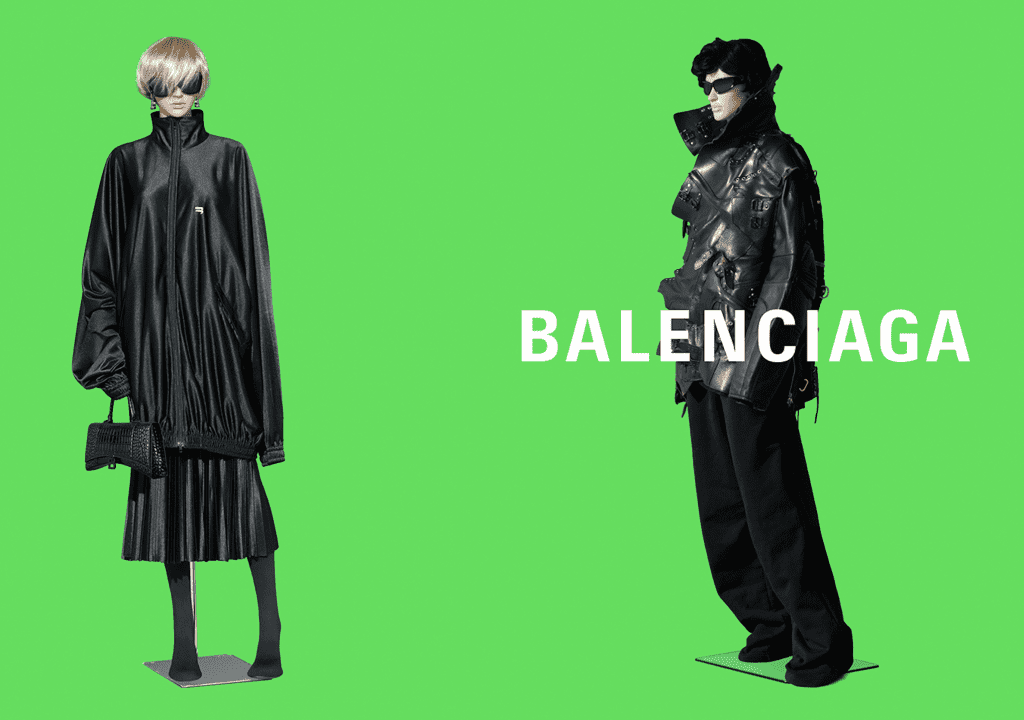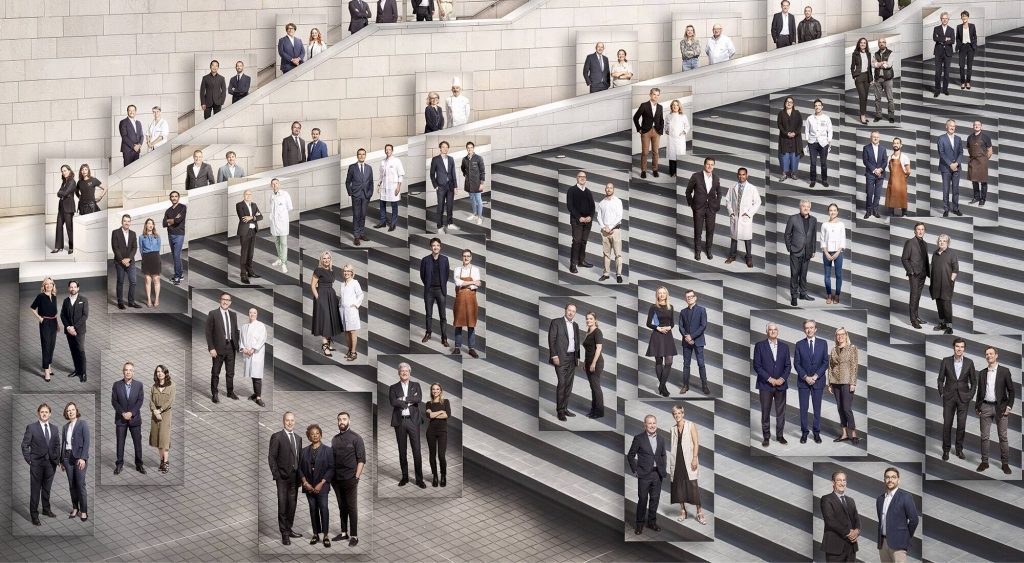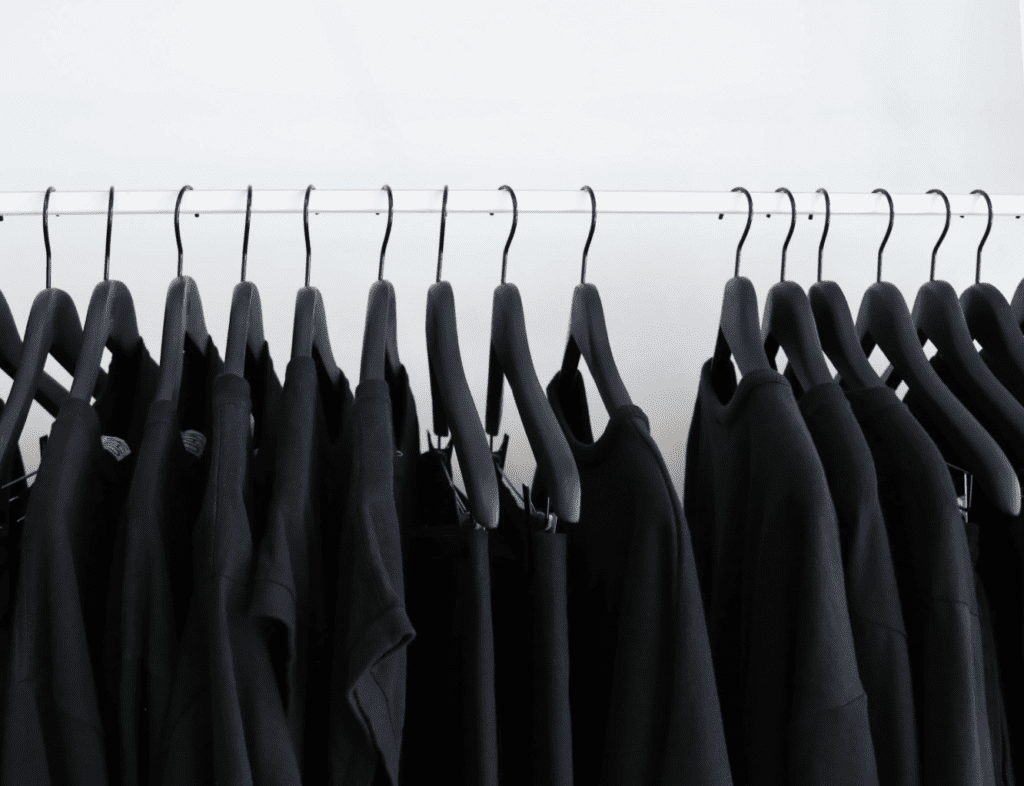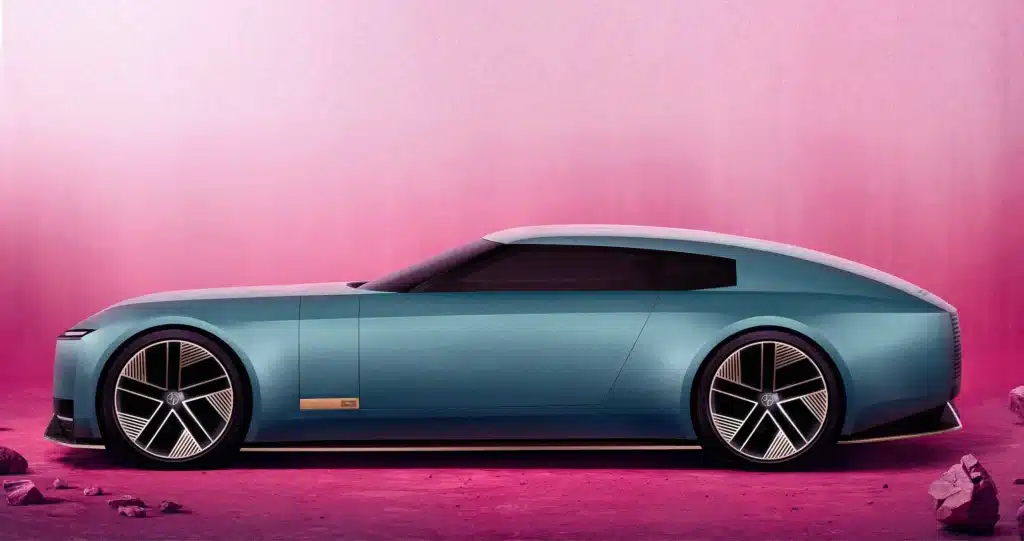Balenciaga is rolling out a virtual division of its own, the latest in a string of metaverse-focused moves, including Diesel and Margiela-owner OTB Group’s announcement this week that it is launching a new business unit “dedicated entirely to the development of products, projects and experiences” designed for the metaverse. “Right now, the climax of interaction with a luxury brand is that you click like, or comment or you buy something,” Balenciaga CEO Cédric Charbit said at a BoF conference on Thursday, noting that he thinks “we can get to the next level” by way of the metaverse, as companies, including those in the fashion field, are taking “gigantic steps every day” when it comes to virtual experiences and offerings.
The revelation from Mr. Charbit, who has been the business head of Balenciaga since 2016, and in particular, his claim about the potential limitations that currently exist with tangible goods mirrors a similar sentiment put forth by Gucci EVP of Brand and Customer Engagement Robert Triefus. Speaking about the industry’s foray in digital ventures last year, Mr. Triefus said that to date, fashion has largely “been defined by a physical experience” – both in terms of “materiality of the product, [as well as] in the experience, going to the stores, etc.” Seemingly hinting at further developments in the digital sphere from Gucci and potentially other luxury brands, as well, he noted that the pandemic has served to speed up existing trends in fashion and luxury, including digital opportunities, and “the notion that our lives can be virtualized, digitized.”
Balenciaga Branding & Revenue Opportunities
Balenciaga’s push to further explore the avenues provided by the virtual world comes as the metaverse (i.e., a virtual-reality space in which users can interact with a computer-generated environment and with other users – or as Nike’s Metaverse Studio Lead Eric Redmond has described it, the metaverse is “the all-encompassing space in which all digital experience sits”) continues to take a more prominent place in companies’ branding efforts, potentially setting the stage for these experiences and virtual goods to add real might to brands’ and luxury goods powerhouses’ revenue-generating activities.
Gucci, for instance, launched a garden-themed virtual pop up on Roblox in the spring of 2020, a move that enabled Roblox’s daily active user base – which totaled 42 million at the time, and has since climbed to 47.3 million as of Q3 – to “immerse themselves in [Gucci creative director] Alessandro Michele’s creative vision and his multifarious inspirations, and share the captivating experience of the exhibition with their friends.” At the same time, they could, of course, win and/or purchase, and then wear exclusive Gucci virtual items.
After unveiling its Fall/Winter 2021 collection via a new game called Afterworld: The Age of Tomorrow, fellow Kering-owned label Balenciaga has since followed up with a tie-up with Epic Games’ blockbuster title Fortnite for a collaboration that has seen the two companies produce both in-game apparel and accessories, as well as physical merch. And as TFL reported last month, it appears that in furtherance of a larger push among Kering-owned brands, including Balenciaga, to be at the forefront of the move to include digital endeavors in the luxury industry’s traditionally-tangible focus, Saint Laurent may also be looking to the virtual world if a couple of new trademark applications for registration that cover things like “connected clothing, smart clothing, connected footwear, [and] smart footwear” is any indication.
All the while, Nike has been garnering widespread attention in connection with the launch of an experience of its own within the Roblox metaverse called Nikeland, and filing a number of applications for the newly-revealed trademark for use on “downloadable virtual goods,” “on-line, non-downloadable virtual footwear,” and “an interactive website and computer application software for virtual reality game services,” etc.
And not to be outdone, rival sportswear titan adidas revealed in mid-November that it acquired space on virtual gaming platform The Sandbox, and teased a partnership with cryptocurrency exchange platform Coinbase. It did not stop there; the Three-Stripes announced a multi-faceted metaverse project on November 29 that sees it join forces with the non-fungible-token brand Bored Ape Yacht Club, NFT comic series Punks Comic, and cryptocurrency investor Gmoney.
A Trillion Dollar Venture?
The push to devote resources – and in some cases, such as Balenciaga and OTB’s, build entire teams around – the metaverse coincides with a steady stream of striking valuations that are being placed on the opportunities on the space by analysts, such as those from Morgan Stanley, who valued the ventures provided for fashion and luxury goods brands, alone, in the metaverse at $50 million. In a recently-published report, entitled, “The Metaverse: Web 3.0 Virtual Cloud Economies,” Grayscale Investments head of research David Grider and research analyst Matt Maximo said that “the market opportunity for bringing the metaverse to life [more broadly] may be worth over $1 trillion in annual revenue, and may compete with Web 2.0 companies worth roughly $15 trillion in market value today.”
More recently, Haim Israel, global strategist and managing director of research for Bank of America, put BoA’s stamp of approval on the budding migration to the metaverse, asserting that it is “a massive, massive opportunity,” and with the “right platforms, this is definitely going to be a big opportunity for this entire ecosystem.”
Still yet, on Wednesday, Bloomberg Intelligence Senior Industry Analyst Matthew Kanterman and Industry Analyst Nathan Naidu stated that the metaverse “is the next big technology platform, attracting online game makers, social networks and other technology leaders to capture a slice of what we calculate to be a nearly $800 billion market opportunity” by 2024, up from an estimated $500 billion in 2020. The primary market for online game makers and gaming hardware may exceed $400 billion in 2024, per Kanterman and Naidu, while opportunities in the live entertainment and social media spaces account for the remaining value.
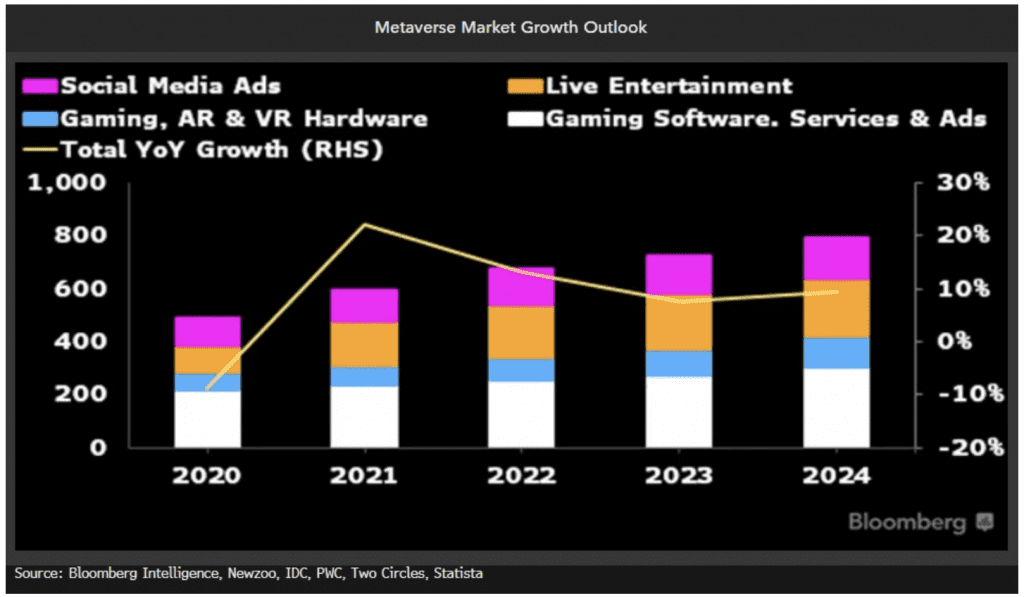
From a fashion and luxury perspective, benefits can be seen on multiple fronts. In addition to providing consumers with a way to interact with brands and their offerings in different ways, something that Balenciaga and Mr. Charbit believe that consumers want, one of the elements of opportunity in the virtual world likely comes, in part, from the lack of limitations in terms of output. Brands can, at least in theory, make – and sell – Roblox-centric accessories and Fortnite skins in quantities that they are unable to match when it comes to tangible goods. The ability to remove quantity – and timing – limitations from the equation is particularly relevant as it enables brand to pursue relatively outsized growth (compared to physical goods offerings), and to do so even amid pushes for de-growth when it comes to physical goods.
The notion of de-growth was on the table at the recent COP 26 UN Climate Change Conference as a way of addressing climate change, prompting the New York Times’ fashion director Vanessa Friedman to note, “It’s hard to imagine Bernard Arnault of LVMH or Ralph Lauren standing up at their annual shareholders meeting and announcing that their strategy for 2022 is ‘degrowth.'” What is not maybe as difficult to imagine is brands looking to boost their output and their earnings by way of intangible goods.
The accessories that Gucci offered up in connection with its Roblox “Gucci Garden” experience are an interesting example. While the items, such as Dionysus bags, an array of eyewear offerings, Gucci Bloom perfume bottles, and branded headbands and hats, were initially available for purchase for between $2 and $9, the fact that at least a few users splashed out thousands of dollars for limited edition virtual Dionysus bags in the Roblox secondary market potentially foreshadows a chance for brands to make big bucks in the metaverse. Moreover, given that more than 4.5 million items were snapped up by Roblox users over the course of the two-week Gucci virtual pop, the demand for such offerings is clearly well-established.
The most immediate issue (in my mind) from a luxury branding perspective when it comes to offering up goods in possibly unlimited quantities is one that actually mirrors a “real world” concern, namely, the potential for logo fatigue and/or dilution of the appeal of a brand and its source-identifying assets by over saturation. There is no telling – yet – how such issues will play out in the metaverse, and whether consumers will respond in the same way as they have in past when it comes to a brands pushing out increased quantities of their logo-ed wares, making this something worth pondering, as we will continue to do.




